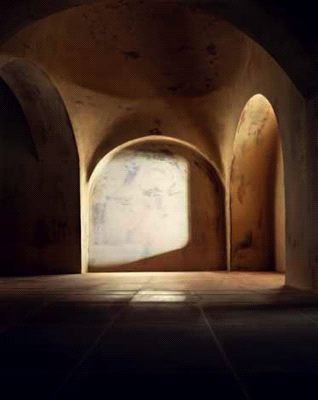The Levant
04 May - 23 Jun 2007

James Casebere
Luxor #1
2007
digital chromogenic print mounted to Plexiglas
90 x 72 inches (228.6 x 182.9 cm)
edition of 5 with 2 APs
60 x 48 inches (152.4 x 121.9 cm)
edition of 5 with 2 APs
JC-185
Luxor #1
2007
digital chromogenic print mounted to Plexiglas
90 x 72 inches (228.6 x 182.9 cm)
edition of 5 with 2 APs
60 x 48 inches (152.4 x 121.9 cm)
edition of 5 with 2 APs
JC-185
THE LEVANT
Sean Kelly is delighted to announce a major exhibition of new work by James Casebere, his first in New York since 2003. The opening of the exhibition will take place on Friday, May 4th from 6pm until 8pm. The artist will be present.
Casebere’s exhibition is comprised of new images inspired by both secular and religious architecture from the geographical area of the Levant in the Middle East. The word levant comes from French word “lever” to rise, and is equivalent to the Arabic word “Mashrik” the meaning of which is the country where the sun rises. The Levant is the region to the eastern end of the Mediterranean Sea, particularly Lebanon and Syria, but also Greece, Turkey, and Egypt. Casebere’s new works originated with his “Spanish Bath” (2003), followed by a trip to southern Spain in 2004 where he immersed himself in Moorish architecture. This resulted in making two works, respectively titled, “Abadia” and “La Alberca,” which are included in the exhibition. Subsequently, Casebere traveled to Turkey where, in preparation for his participation in the 2006 Seville Biennial curated by Okwui Enwezor, he researched Ottoman architecture, particularly that of Sinan (1489-1588), generally considered the greatest of all Ottoman architects. From Rustem Pasha Mosque and the dormitory at Topkapi Palace in Istanbul, to the al-Askari Mosque in the Iraqi city of Samarra (known as “the golden mosque”), to Tripoli in Lebanon, and to Egyptian domestic interiors, Casebere continues his singular investigation of archetypal spaces in these new images, while revealing complex past and present histories.
For the last thirty years James Casebere has constructed increasingly complex models that are subsequently photographed in his studio. His table-size constructions, based on architectural, art historical and cinematic sources are made of simple materials, pared down to essential forms, and frequently emptied of extraneous detail. His subject matter has focused on institutional spaces and the relationship between social control, societal structure and ever more sophisticated levels of interpretation. Casebere continually explores the mythologies that surround particular institutions, as well as the broader implications of dominant systems, such as commerce, labor, religion and law.
James Casebere is represented in innumerable public and private collections worldwide including the National Gallery of Canada, Ottawa; the Fonds National d'Art Contemporain, Paris, France; the Neue Galerie der Stadt, Linz, Austria; the Goetz Collections, Munich Germany, the Mukha Museum, Antwerp, Belgium; the Victoria and Albert Museum, London, England; the Tate Modern, London, England; the Museum of Modern Art, New York; the Solomon R. Guggenheim Museum, New York; the Metropolitan Museum of Art, New York, the Whitney Museum of American Art, New York, the National Gallery of Art, Washington, DC and many others.
Sean Kelly is delighted to announce a major exhibition of new work by James Casebere, his first in New York since 2003. The opening of the exhibition will take place on Friday, May 4th from 6pm until 8pm. The artist will be present.
Casebere’s exhibition is comprised of new images inspired by both secular and religious architecture from the geographical area of the Levant in the Middle East. The word levant comes from French word “lever” to rise, and is equivalent to the Arabic word “Mashrik” the meaning of which is the country where the sun rises. The Levant is the region to the eastern end of the Mediterranean Sea, particularly Lebanon and Syria, but also Greece, Turkey, and Egypt. Casebere’s new works originated with his “Spanish Bath” (2003), followed by a trip to southern Spain in 2004 where he immersed himself in Moorish architecture. This resulted in making two works, respectively titled, “Abadia” and “La Alberca,” which are included in the exhibition. Subsequently, Casebere traveled to Turkey where, in preparation for his participation in the 2006 Seville Biennial curated by Okwui Enwezor, he researched Ottoman architecture, particularly that of Sinan (1489-1588), generally considered the greatest of all Ottoman architects. From Rustem Pasha Mosque and the dormitory at Topkapi Palace in Istanbul, to the al-Askari Mosque in the Iraqi city of Samarra (known as “the golden mosque”), to Tripoli in Lebanon, and to Egyptian domestic interiors, Casebere continues his singular investigation of archetypal spaces in these new images, while revealing complex past and present histories.
For the last thirty years James Casebere has constructed increasingly complex models that are subsequently photographed in his studio. His table-size constructions, based on architectural, art historical and cinematic sources are made of simple materials, pared down to essential forms, and frequently emptied of extraneous detail. His subject matter has focused on institutional spaces and the relationship between social control, societal structure and ever more sophisticated levels of interpretation. Casebere continually explores the mythologies that surround particular institutions, as well as the broader implications of dominant systems, such as commerce, labor, religion and law.
James Casebere is represented in innumerable public and private collections worldwide including the National Gallery of Canada, Ottawa; the Fonds National d'Art Contemporain, Paris, France; the Neue Galerie der Stadt, Linz, Austria; the Goetz Collections, Munich Germany, the Mukha Museum, Antwerp, Belgium; the Victoria and Albert Museum, London, England; the Tate Modern, London, England; the Museum of Modern Art, New York; the Solomon R. Guggenheim Museum, New York; the Metropolitan Museum of Art, New York, the Whitney Museum of American Art, New York, the National Gallery of Art, Washington, DC and many others.
